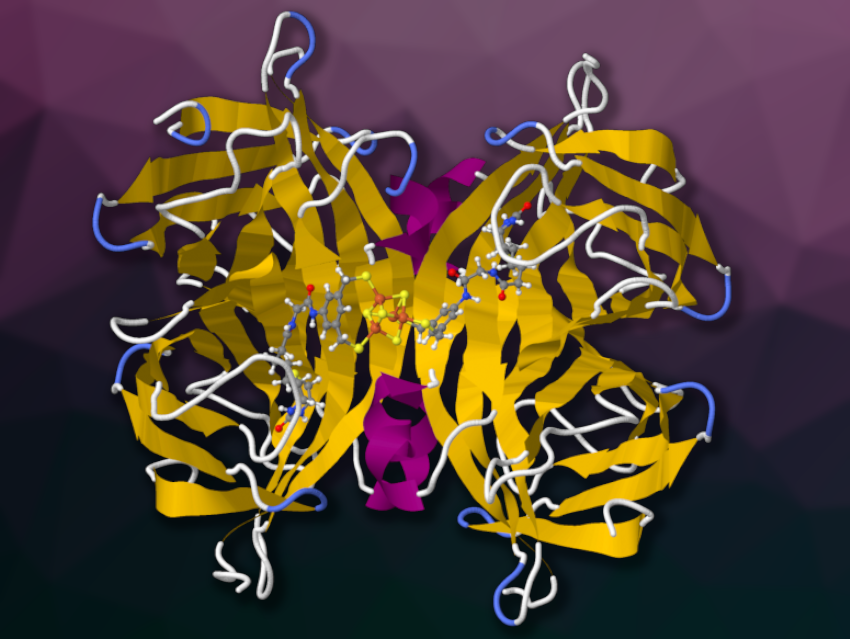Many important enzymes in Nature use cofactors (non-protein components) based on iron-sulfur clusters. [Fe4S4], a cube-like group, is a common example of these clusters. Apart from its role in Nature, this cluster can also be useful in catalysis in the laboratory and activate chemical species that are fairly inert, and thus, challenging to convert.
Thomas R. Ward, University of Basel, Switzerland, and colleagues have used this approach to build an artificial enzyme that can convert CO2 to hydrocarbons (a “Fischer–Tropschase” or FTase). The team first prepared a [Fe4S4] cluster with two biotinylated 3,5-bis(mercaptomethyl)benzene ligands, with a glycine spacer between the biotin and the ligand. This functionalized cluster was then “anchored” to the protein streptavidin (Sav), which has a high affinity for biotin and serves as a host protein.
The team found that the functionalized cluster and the protein form discrete assemblies that are stable in an aqueous solution for at least 18 h. The resulting artificial enzyme can produce short alkanes and alkenes in the presence of CO2 and Eu(II)-DTPA (DTPA = diethylenetriamine pentaacetate) as a reductant.
The researchers then optimized the activity of the artificial enzyme using different mutants of the protein, as well as a β-alanine-spacer instead of the glycine spacer. They found that the introduction of mutations at either the S112 or K121 position affects FTase performance, which indicates that the active catalyst is, indeed, embedded in the protein. The team states that they aim to optimize the FTase activity further by evaluating a large library of Sav-like proteins.
- An Artificial [Fe4S4]-Containing Metalloenzyme for the Reduction of CO2 to Hydrocarbons,
Valerie Waser, Manjistha Mukherjee, Ryo Tachibana, Nico V. Igareta, Thomas R. Ward,
J. Am. Chem. Soc. 2023.
https://doi.org/10.1021/jacs.3c03546




